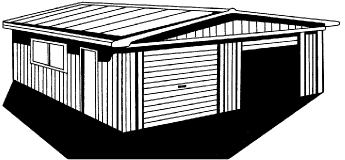



Common causes of rust and corrosion in metal wall sheeting is when the metal sheet comes into contact with concrete or dissimilar flashings, caused by the bad practices of:
Campbells products eliminate rust and corrosion by providing an impassable barrier between the concrete slab and the wall sheet. Our RETROSEAL products are designed to be fitted to new or existing buildings
Back to topThe major problems encountered when using profile cut flashings is the shrink or creep of the sheet profile. This may be due to deliberate shrinking or expanding of the sheets to align them to run parallel with the building. It can also be caused by slight variations in manufacturers roll-mills.
RETROSEAL products address these problems in several ways.
These factors result in the flashing being very forgiving of inconsistencies in roof sheeting.
Back to topThe BAL rating (Bushfire Attack Level) requirement of the Building Code of Australia 2011 specifies that mineral wool, metal mesh or non-combustible ember barriers be provided that allow a gap of no more than 3mm in roof, wall and floor junctions.
Campbells metal products help fulfil this requirement when installed in accordance with instructions. Profile cut metal flashings assist in overcoming potential corrosion that may be experienced with some fibrous barrier materials, by eliminating condensation buildup.
Although the BAL rating is designed to improve the performance of buildings under bushfire attack, there can be no guarantee that a building will survive a bushfire event on every occasion.
For buildings that have to meet the Australian Standard BAL regulation, it is the responsibility of the installer to be aware of these requirements, and to identify and close any gaps that exceed 3mm.
Back to topThe material used in these products is a high quality unplasticised (rigid) PVC which is suitable for indoor and outdoor applications. It contains a UV absorber, and all other ingredients are recommended for applications involving exposure to sunlight.
However, a shrinkage or distortion of about 0.5% can occur in very hot climates or conditions; however, this should not unduly affect the performance of the product. It is recommended that all PVC products be stored in their box and out of the sun in hot climates prior to installation.
PVC materials should be stored away from flammable substances as static buildup can occur. In the event of fire, our PVC products are self-extinguishing; however, if a fire occurs, fire fighters must wear breathing equipment as PVC compound forms hydrogen chloride if burnt.
Back to top